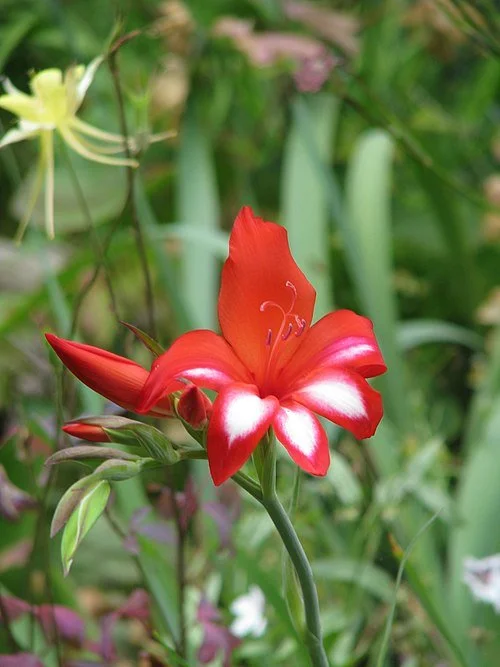
Fritillaria graeca
A striking and uncommon species, Fritillaria graeca is native to the mountainous regions of the Balkans, particularly in Greece, Albania, and North Macedonia, where it grows in rocky meadows and open woodland clearings at moderate elevations. Its nodding, bell-shaped flowers are richly colored—typically a deep maroon to reddish-brown with intricate checkered or mottled patterns, often edged in yellow or green, and borne singly or in small clusters atop slender stems reaching 6–12 inches tall. Like most Fritillaria individuals grown from seed can be highly variable.
In cultivation F. graeca performs best in areas with cool, moist winters and dry summers, making it well-suited to rock gardens, troughs, and raised beds with excellent drainage. It requires full sun to light shade and benefits from a gritty, humus-rich soil that remains cool but not wet during dormancy. Ideal for collectors or gardeners interested in alpine and Mediterranean flora.
Hardy to USDA Zone 5, though winter wet can be more damaging than cold—protection from excessive moisture is key in zones with heavy rainfall. A refined and elegant choice for spring interest, especially in carefully curated bulb plantings.
A striking and uncommon species, Fritillaria graeca is native to the mountainous regions of the Balkans, particularly in Greece, Albania, and North Macedonia, where it grows in rocky meadows and open woodland clearings at moderate elevations. Its nodding, bell-shaped flowers are richly colored—typically a deep maroon to reddish-brown with intricate checkered or mottled patterns, often edged in yellow or green, and borne singly or in small clusters atop slender stems reaching 6–12 inches tall. Like most Fritillaria individuals grown from seed can be highly variable.
In cultivation F. graeca performs best in areas with cool, moist winters and dry summers, making it well-suited to rock gardens, troughs, and raised beds with excellent drainage. It requires full sun to light shade and benefits from a gritty, humus-rich soil that remains cool but not wet during dormancy. Ideal for collectors or gardeners interested in alpine and Mediterranean flora.
Hardy to USDA Zone 5, though winter wet can be more damaging than cold—protection from excessive moisture is key in zones with heavy rainfall. A refined and elegant choice for spring interest, especially in carefully curated bulb plantings.








